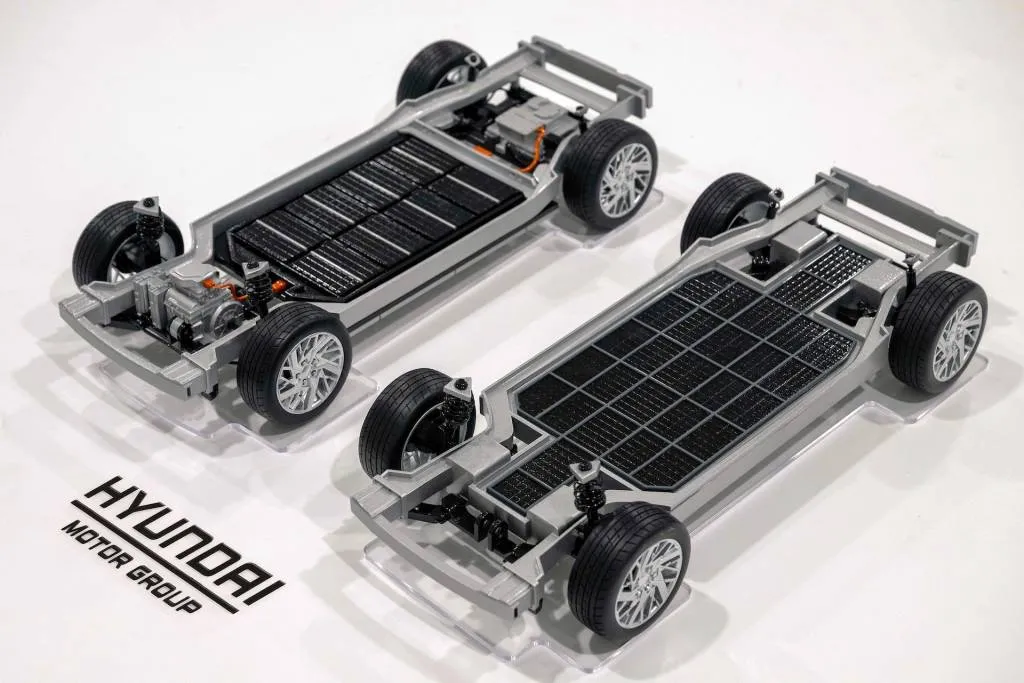Hyundai and Kia on Wednesday unveiled a new EV motor design that splits the difference between conventional motors and in-wheel motors.
Dubbed the Universal Wheel Drive System—or Uni Wheel for short—this design moves motors closer to the wheels but not into them. That’s made possible by a planetary gear set with a central sun gear, four pinion gears on each side, and a surrounding ring gear connected to the wheel.
The motor spins the sun gear, which transmits power through the pinion gears to turn the ring gear, and thus the wheel. This arrangement replaces the reduction gears used in conventional EVs, still allowing the motor to spin many times for each rotation of the driven wheel.
Hyundai and Kia Uni Wheel drive system for EVs
Hyundai and Kia claim the Uni Wheel can free up additional interior space by moving components closer to the wheels, while improving efficiency and durability by eliminating CV joints. And it’s configured in a way so as to avoid the concerns about unsprung mass that have given engineers pause regarding in-wheel motors, the automakers claim, adding that the Uni Wheel can be combined with an electronically-adjustable air suspension.
The Uni Wheel setup also allows for a higher reduction ratio, delivering adequate torque with more compact motors, Hyundai and Kia claim. It allows for up to four motors with torque vectoring, but this begs the question of whether four separate motors would be better than just two (or one). That’s one that Rivian has faced—in reassessing the Quad Motor layout it originally emphasized.

Hyundai and Kia Uni Wheel drive system for EVs
The Uni-Wheel might be a part of a future EV architecture that truly maximizes space—something the brands already made a lot of progress toward in their shared E-GMP platform for current EVs. Hyundai stopped developing gasoline powertrains in 2021, so it’s likely been pivoting to solutions like this that could be scaled up to the same level.
Hyundai doesn’t directly point to this solution with its e-Corner maneuverability tech—which also relies on motors placed at the corners of the vehicle—but it seems like the next step.
